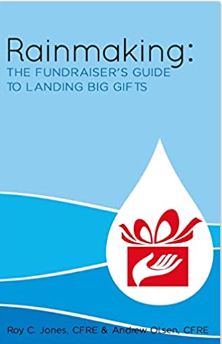The first question every development professional must ask is how many donors who gave last year have not given this year? In other words, how many supporters have lapsed?
major gifts
Are your board members currently involved in major gift fundraising?
Board members need to get more involved in major donor efforts through sharing, identifying donors, meeting with prospects, introducing their friends to the organization and ensuring the development director has what she needs to be successful.
Tee Up Your Next Major Gift ASK: Create personalized video messages from the field
You probably can’t do this for your entire donor base, but imagine how great your donors will feel when your CEO or board chair sends them a personal video greeting and message of thanks from the site of one of your projects.
Are YOU Business Partners With Your Major Donor?
great major gift fundraisers understand that those writing the checks are ultimately their business partners.
Realize Fundraising Is Not About The Money…
From "Rainmaking: The Fundraisers Guide to Landing Big Gifts" on page 112... [Save 10% by ordering here: http://t.co/ZESuoSHy92 ] The best fundraisers know that relationships are never about money. By the same token, successful major gift officers make sure the...
Do Your Supporters Have a WISH LIST?
Most charities spend a lot of time telling their major donors and supporters about their "wish lists". The things their charity wants to do if donors would just write them a check. However, the secret to securing more major gifts is NOT telling your supporters your...
Get Your Charity a Ladder… Please!
Donors move up the ladder from one year to the next as you ask for more and demonstrate that you have been a good steward with their previous gifts.
What Do Major Donors Really Want?
“I don’t give money away. I make investments. Before providing support to anyone I measure impact, I want to see how many lives my investment will touch. I will often compare the impact of the amount I am ask for with what kind of impact I am having somewhere else.”
The Ask… Is it your “spot on the wall”?
Of the 2.1 million charities doing business in the United States, most enter the new year without an ask strategy. We don’t take the time to develop our 7-figure, 6-figure and 5-figure asks. We don’t have a case for support. We don’t even have a needs list. We get sloppy with our research and do not determine our supporters “donative intent” and giving capacity.
Five Qualities of a Highly Effective Major Gift Officer
As I boarded a plane a few years ago from Los Angeles, I was going through my routine… stowing my lap top under the seat in front of me, neatly folding my jacket in the overhead bin, and most importantly, putting on my headset and dialing in my Ipod with my favorite...

